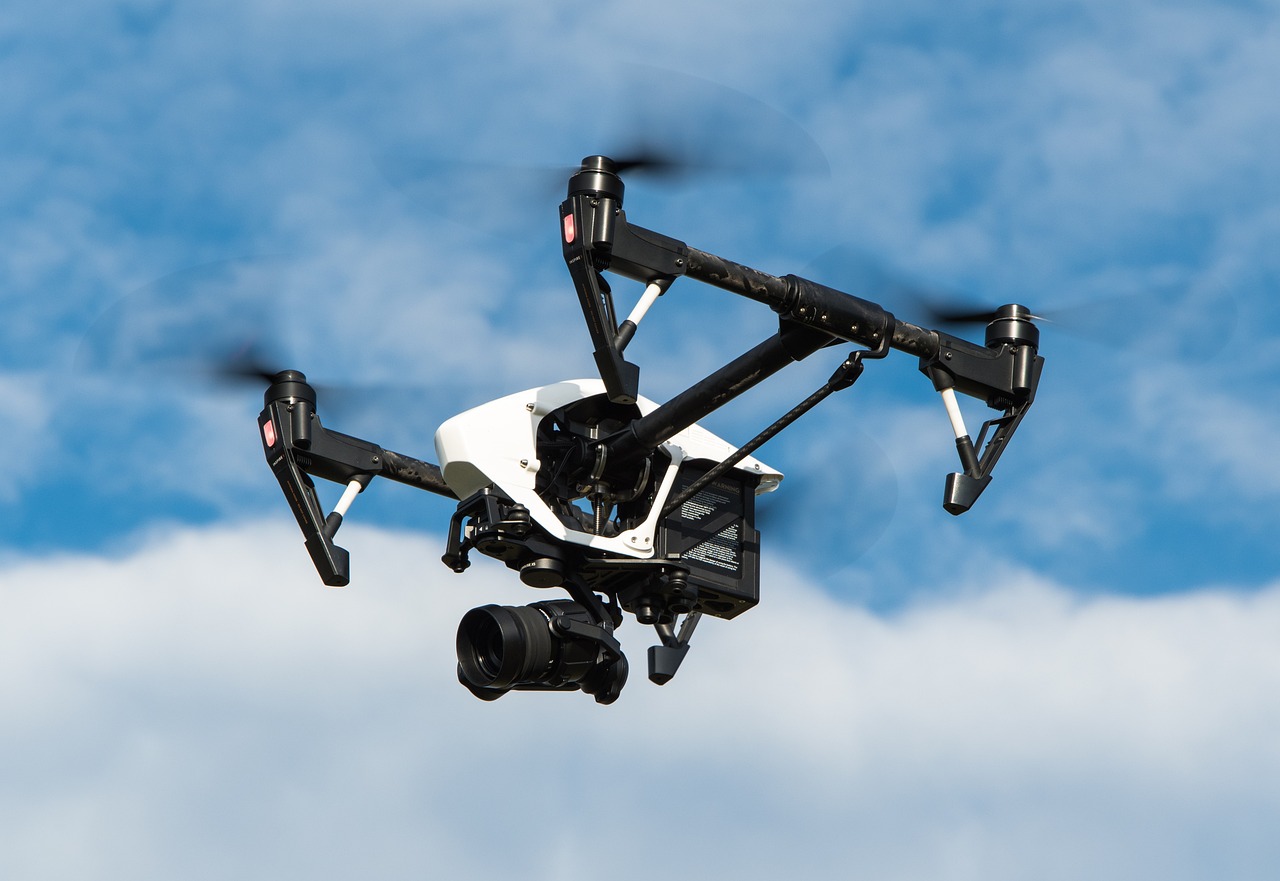AI and Predictive Maintenance in Defense Operations
In recent years, the integration of artificial intelligence (AI) into various sectors has transformed traditional practices, and the defense industry is no exception. The concept of predictive maintenance has emerged as a game-changer, utilizing AI to enhance the operational capabilities of military forces. Imagine a world where military equipment can predict its own failures before they happen—this is not science fiction; it's the reality that AI is bringing to defense operations. By harnessing the power of data analytics and machine learning, military organizations can significantly improve their readiness and efficiency. This article delves into how AI is revolutionizing predictive maintenance in defense operations, the benefits it brings, the challenges faced, and what the future holds for this innovative approach.
At its core, predictive maintenance is all about anticipating equipment failures before they occur. AI plays a crucial role in this process by analyzing vast amounts of data generated from various sources, such as sensors and historical maintenance records. By identifying patterns and anomalies in this data, AI can forecast potential failures, allowing military personnel to take proactive measures. This not only enhances operational readiness but also minimizes downtime, ensuring that critical defense systems are always at peak performance. The ability to predict equipment issues transforms maintenance from a reactive to a proactive approach, which is vital in high-stakes environments where every second counts.
The implementation of predictive maintenance in defense operations brings a multitude of benefits that significantly enhance military effectiveness. One of the most notable advantages is the increased lifespan of equipment. By addressing potential issues early, military organizations can extend the operational life of their assets, ensuring they remain effective for longer periods. Additionally, this approach leads to reduced maintenance costs. By preventing unexpected breakdowns, defense forces can save substantial amounts on costly repairs and replacements. Furthermore, improved mission readiness is a direct result of predictive maintenance, as equipment is less likely to fail during critical operations. The cumulative effect of these benefits is a more efficient and effective military operation.
One of the key strategies for cost reduction in defense operations is the early identification of potential failures. Predictive maintenance enables defense organizations to implement cost-saving measures that prevent expensive repairs. For instance, consider the following strategies:
- Regular Data Analysis: Continuously analyzing operational data helps in early detection of wear and tear.
- Scheduled Maintenance: By predicting when maintenance should occur, resources can be allocated more effectively.
- Training Personnel: Ensuring that staff are trained in using AI tools can maximize the benefits of predictive maintenance.
These strategies not only lead to cost savings but also ensure that critical assets are maintained in optimal condition, ready for deployment at a moment’s notice.
In the realm of defense, data-driven decision making is paramount. With AI and predictive maintenance, military leaders can make informed choices based on real-time insights. This capability allows for the optimization of maintenance schedules, resource allocation, and operational planning. Imagine a military commander who can foresee equipment failures and adjust their strategies accordingly. This level of foresight can be the difference between mission success and failure, making data analytics an invaluable asset in modern warfare.
Predictive maintenance significantly boosts the reliability of defense equipment. By predicting potential issues before they occur, military forces can ensure that their equipment is always mission-ready. This reliability is crucial in high-pressure situations where unexpected failures can lead to dire consequences. The ability to trust that equipment will perform as expected allows military personnel to focus on their missions rather than worrying about equipment malfunctions.
Despite its numerous advantages, implementing predictive maintenance in defense operations is not without challenges. Some of the most significant obstacles include:
- Data Integration: Combining data from various sources can be complex and time-consuming.
- Workforce Training: Ensuring that personnel are adequately trained to use AI tools is essential for successful implementation.
- Cybersecurity Measures: Protecting sensitive data from cyber threats is critical in defense operations.
Addressing these challenges requires a concerted effort from military organizations, but the potential rewards far outweigh the hurdles.
The evolution of predictive maintenance in defense is being driven by advancements in sensor technology, machine learning, and data analytics. These innovations are making predictive maintenance a vital component of modern defense strategies. Machine learning algorithms, for instance, analyze vast amounts of operational data to identify trends and anomalies, facilitating proactive maintenance strategies that enhance defense capabilities. Meanwhile, innovative sensor technologies provide real-time monitoring of equipment health, enabling defense forces to detect issues early and implement maintenance before failures occur.
Machine learning algorithms are the backbone of predictive maintenance. They sift through enormous datasets, identifying patterns that human analysts might miss. This capability allows for a proactive approach to maintenance, ensuring that military assets are always ready for action.
Innovative sensor technologies are revolutionizing how defense forces monitor equipment health. These sensors provide real-time data that can alert personnel to potential issues before they escalate into critical failures. This capability is essential for maintaining the operational readiness of military equipment in the field.
The future of AI in predictive maintenance looks incredibly promising. With ongoing developments in autonomous systems and advanced analytics, we can expect to see even greater enhancements in defense operations and maintenance practices. As AI continues to evolve, its integration into predictive maintenance will likely become more sophisticated, enabling military organizations to operate with unparalleled efficiency and effectiveness.
Q: What is predictive maintenance?
A: Predictive maintenance is a proactive maintenance strategy that uses data analysis to predict when equipment failures might occur, allowing for maintenance to be performed just in time to avoid failures.
Q: How does AI improve predictive maintenance?
A: AI enhances predictive maintenance by analyzing large datasets to identify patterns and anomalies, enabling early detection of potential failures.
Q: What are the main benefits of implementing predictive maintenance in defense?
A: The main benefits include increased equipment lifespan, reduced maintenance costs, and improved mission readiness.
Q: What challenges do organizations face when implementing predictive maintenance?
A: Challenges include data integration, workforce training, and cybersecurity concerns.

The Role of AI in Predictive Maintenance
Artificial Intelligence (AI) is revolutionizing the way defense operations approach maintenance strategies. Traditionally, maintenance was often reactive—waiting for equipment to fail before taking action. This method not only led to unexpected downtimes but also increased operational costs and risks. Now, with the advent of AI, predictive maintenance has emerged as a game-changer, allowing military organizations to shift from a reactive to a proactive approach.
At its core, AI in predictive maintenance utilizes sophisticated algorithms and machine learning to analyze vast amounts of data collected from various sensors embedded in equipment. By identifying patterns and trends, AI can forecast potential failures before they occur. This capability is akin to having a crystal ball; military leaders can foresee equipment issues and address them before they escalate into costly repairs or mission failures.
Moreover, the integration of AI in predictive maintenance enhances operational readiness significantly. For instance, consider a scenario where a fighter jet's engine is monitored continuously. AI can analyze vibration patterns, temperature fluctuations, and other critical data points to determine the engine's health. If the system predicts an anomaly, maintenance can be scheduled proactively, ensuring that the aircraft remains mission-ready without unexpected delays.
In addition to improving readiness, AI-driven predictive maintenance also plays a vital role in optimizing resource allocation. By understanding when and where maintenance is needed, defense organizations can allocate their resources—be it manpower or budget—more effectively. This not only saves costs but also ensures that critical assets are always available when needed, ultimately enhancing the overall effectiveness of military operations.
To illustrate the impact of AI in predictive maintenance, consider the following table that summarizes key benefits:
| Benefit | Description |
|---|---|
| Enhanced Readiness | Predictive maintenance ensures that equipment is always in optimal condition, ready for deployment. |
| Cost Efficiency | By preventing failures, organizations can save on expensive repairs and reduce maintenance costs. |
| Resource Optimization | AI enables better planning and allocation of maintenance resources, maximizing operational effectiveness. |
In summary, the role of AI in predictive maintenance is pivotal for modern defense operations. It transforms how military organizations manage their assets, ensuring that they remain operationally ready while simultaneously driving down costs and improving overall effectiveness. As we look towards the future, the integration of AI will only deepen, leading to even more sophisticated maintenance strategies that will keep our defense systems at the forefront of technology.
- What is predictive maintenance? Predictive maintenance is a proactive approach that uses data analysis to predict when equipment might fail, allowing for timely maintenance.
- How does AI enhance predictive maintenance? AI analyzes data from various sources to identify patterns, enabling organizations to forecast equipment failures before they occur.
- What are the benefits of using AI in defense operations? Benefits include enhanced readiness, cost efficiency, and optimized resource allocation, all of which contribute to improved military effectiveness.

Benefits of Predictive Maintenance in Defense
Implementing predictive maintenance in defense operations brings a myriad of benefits that significantly enhance military effectiveness. Imagine a world where equipment failures are anticipated before they happen, allowing for timely interventions that keep missions on track. This proactive approach not only extends the lifespan of critical assets but also ensures that military forces are always prepared for action. In essence, predictive maintenance transforms the way defense organizations manage their resources, leading to improved operational readiness.
One of the most compelling advantages of predictive maintenance is its ability to reduce maintenance costs. By identifying potential failures early on, defense organizations can avoid the hefty expenses associated with emergency repairs. For instance, consider a scenario where a military aircraft requires an unexpected engine overhaul. Such an incident could cost millions and ground the aircraft for weeks, jeopardizing mission success. However, with predictive maintenance, the signs of wear and tear can be detected early, allowing for scheduled maintenance that is far less disruptive and costly.
Furthermore, predictive maintenance enhances mission readiness. In the heat of battle, the last thing a military leader wants to worry about is whether their equipment will function as intended. Predictive maintenance provides the assurance that equipment is in optimal condition, thereby enabling troops to focus on their primary objectives. This peace of mind is invaluable, especially in high-stakes environments where every second counts.
In addition to cost savings and improved readiness, predictive maintenance also fosters data-driven decision-making. Military leaders can leverage real-time insights from data analytics to optimize maintenance schedules and allocate resources more effectively. This strategic approach not only maximizes the utility of available assets but also enhances overall operational efficiency. For example, if data indicates that a particular vehicle model is prone to specific failures, maintenance teams can prioritize inspections and repairs for those units, ensuring that they remain mission-ready.
Moreover, the reliability of defense equipment is significantly enhanced through predictive maintenance. By predicting potential issues before they arise, military forces can ensure that their equipment operates smoothly, reducing the risk of unexpected breakdowns during critical operations. This reliability is akin to having a well-oiled machine that performs flawlessly when called upon, thereby boosting the overall effectiveness of military operations.
To summarize, the benefits of predictive maintenance in defense operations are profound and multifaceted, including:
- Increased Equipment Lifespan: Regular maintenance based on predictive analytics extends the life of military assets.
- Reduced Maintenance Costs: Early detection of issues prevents costly emergency repairs.
- Improved Mission Readiness: Ensures that equipment is always prepared for action.
- Data-Driven Decision Making: Enables strategic resource allocation and maintenance scheduling.
- Enhanced Equipment Reliability: Minimizes unexpected failures during critical missions.
As we look to the future, the integration of predictive maintenance will undoubtedly play a pivotal role in shaping the efficiency and effectiveness of defense operations. By embracing this innovative approach, military organizations can ensure that they remain at the forefront of operational readiness, capable of responding swiftly and effectively to any challenge that arises.
- What is predictive maintenance?
Predictive maintenance is a proactive maintenance strategy that uses data analysis and monitoring technologies to predict when equipment failures might occur, allowing for timely maintenance interventions.
- How does AI contribute to predictive maintenance?
AI analyzes vast amounts of operational data to identify patterns and anomalies, enabling military organizations to implement maintenance strategies that enhance equipment reliability and operational readiness.
- What are the main benefits of predictive maintenance in defense?
The main benefits include reduced maintenance costs, increased equipment lifespan, improved mission readiness, and enhanced data-driven decision-making capabilities.

Cost Reduction Strategies
When it comes to defense operations, the stakes are incredibly high. Every dollar spent counts, and if there's a way to save costs while ensuring peak operational readiness, it's worth exploring. This is where predictive maintenance steps in as a game-changer. By identifying potential failures before they become catastrophic, defense organizations can implement cost-saving measures that not only prevent expensive repairs but also extend the life of critical assets. Imagine being able to foresee a problem with a military vehicle before it breaks down in the field—this foresight translates into significant savings and enhanced mission success.
One of the most effective strategies in predictive maintenance is the use of data analytics. By analyzing patterns in operational data, military leaders can make informed decisions about when to perform maintenance. This proactive approach minimizes unnecessary downtime and reduces the need for reactive repairs, which are often far more costly. For example, if data indicates that a particular component tends to fail after a certain number of operational hours, maintenance can be scheduled just before that threshold, effectively avoiding a breakdown.
Moreover, predictive maintenance enables a more efficient allocation of resources. Instead of a one-size-fits-all maintenance schedule, military units can tailor their maintenance plans based on actual usage and condition data. This means that resources can be directed where they are most needed, ensuring that personnel and equipment are available for critical missions without overspending on unnecessary maintenance.
To illustrate the potential savings, consider the following table that outlines the cost implications of reactive versus predictive maintenance in defense operations:
| Maintenance Type | Average Cost per Incident | Frequency of Incidents | Total Annual Cost |
|---|---|---|---|
| Reactive Maintenance | $50,000 | 10 | $500,000 |
| Predictive Maintenance | $25,000 | 5 | $125,000 |
As you can see, the shift from reactive to predictive maintenance can lead to a substantial reduction in costs. In this example, a defense organization could save a whopping $375,000 annually by adopting predictive maintenance strategies. That's not just a number; it's funding that could be redirected to other critical areas, such as training or acquiring new technologies.
In conclusion, the integration of predictive maintenance in defense operations is not merely a trend; it’s a necessity for modern military effectiveness. By leveraging advanced analytics and real-time data, defense organizations can not only cut costs but also enhance their operational capabilities. As the world evolves, so too must our strategies for maintaining the equipment that ensures our safety and success.
- What is predictive maintenance?
Predictive maintenance is a proactive approach that uses data analytics to predict equipment failures before they occur, allowing for timely maintenance interventions.
- How does AI contribute to predictive maintenance?
AI analyzes vast amounts of operational data to identify patterns and anomalies, facilitating proactive strategies that enhance equipment reliability.
- What are the cost benefits of predictive maintenance?
By preventing unexpected failures and optimizing maintenance schedules, predictive maintenance can lead to significant cost reductions in repair and operational downtime.
- What challenges are associated with implementing predictive maintenance?
Challenges include data integration, workforce training, and ensuring robust cybersecurity measures to protect sensitive operational data.

Data-Driven Decision Making
In the ever-evolving landscape of defense operations, has emerged as a game-changer. Imagine being a military leader tasked with ensuring the readiness of your forces; the weight of that responsibility can be overwhelming. However, with the integration of artificial intelligence and predictive maintenance, leaders are now equipped with real-time insights that can transform how decisions are made. This shift from intuition-based to data-driven strategies not only enhances operational efficiency but also significantly improves mission outcomes.
At the heart of this transformation lies the ability to analyze vast amounts of data generated by various defense systems. With advanced analytics, military leaders can sift through this data to uncover trends, patterns, and anomalies that would be impossible to detect manually. This capability allows for the optimization of maintenance schedules and resource allocation, ensuring that every asset is utilized to its fullest potential. For instance, if a particular aircraft shows signs of wear and tear based on historical data, maintenance can be scheduled proactively rather than reactively, thereby preventing potential failures during critical operations.
Moreover, the integration of AI in decision-making processes fosters a culture of continuous improvement. As data is collected and analyzed over time, organizations can refine their strategies and processes. This iterative approach not only enhances the reliability of equipment but also builds a feedback loop that informs future decisions. For example, if a specific maintenance strategy proves effective in extending the lifespan of certain equipment, that knowledge can be applied across other areas, leading to widespread improvements.
However, it’s essential to note that successful data-driven decision making requires a robust framework. This includes investing in the right technologies, ensuring data integrity, and fostering a culture that embraces change. Defense organizations must also prioritize training their workforce to interpret and act on data insights effectively. Without these elements, the potential of predictive maintenance and AI can go unrealized.
In conclusion, the shift towards data-driven decision making in defense operations is not just a trend; it's a necessity. As military leaders harness the power of data to inform their choices, they are better positioned to enhance operational readiness and effectiveness. The future of defense depends on this transformation, where decisions are backed by data, ensuring that every move is calculated and every action is precise.
- What is predictive maintenance?
Predictive maintenance is a proactive approach that uses data analysis to predict when equipment will fail, allowing for timely maintenance and reducing downtime. - How does AI enhance predictive maintenance?
AI analyzes vast amounts of operational data to identify patterns and anomalies, enabling early detection of potential equipment failures. - What are the challenges of implementing predictive maintenance in defense?
Challenges include data integration, workforce training, and ensuring robust cybersecurity measures to protect sensitive information. - What role do machine learning algorithms play in predictive maintenance?
Machine learning algorithms process operational data to identify trends, helping organizations develop proactive maintenance strategies. - What are the future trends in AI and predictive maintenance?
The future includes advancements in autonomous systems and advanced analytics, which will further revolutionize defense operations.

Enhanced Equipment Reliability
In the realm of defense operations, equipment reliability is not just a luxury; it’s a necessity. Imagine a world where military assets operate seamlessly, without unexpected breakdowns or failures that could jeopardize missions. This is where predictive maintenance, powered by artificial intelligence, truly shines. By employing advanced algorithms to analyze historical and real-time data, predictive maintenance allows military leaders to foresee potential equipment failures before they occur. This proactive approach not only minimizes downtime but also ensures that every piece of equipment is ready for action when it’s needed the most.
One of the most significant advantages of enhanced equipment reliability is the reduction of operational risks. When equipment is consistently maintained and monitored, the chances of critical failures during high-stakes operations significantly decrease. For instance, consider a scenario where a military aircraft is scheduled for a critical mission. With predictive maintenance in place, any signs of wear or potential malfunction can be detected early, allowing for timely repairs. This not only saves lives but also preserves valuable resources. The peace of mind that comes with knowing that equipment is functioning optimally cannot be overstated.
Furthermore, the integration of AI in predictive maintenance fosters a culture of continuous improvement. As data is collected and analyzed, defense organizations can refine their maintenance protocols, leading to better practices and strategies over time. This data-driven approach allows military leaders to make informed decisions, optimizing not just maintenance schedules but also the allocation of resources. For example, if a particular type of equipment consistently shows signs of wear, adjustments can be made to its usage or maintenance frequency, thereby extending its lifespan.
To illustrate the impact of enhanced equipment reliability, let's take a look at a comparative analysis of maintenance strategies:
| Maintenance Strategy | Reliability Rating | Cost Implications | Operational Impact |
|---|---|---|---|
| Reactive Maintenance | Low | High | Frequent Failures |
| Preventive Maintenance | Moderate | Moderate | Occasional Failures |
| Predictive Maintenance | High | Low | Minimal Failures |
This table highlights the stark contrast between traditional maintenance strategies and predictive maintenance. As we can see, the shift towards predictive maintenance not only enhances reliability but also significantly reduces costs associated with unexpected failures. The military can allocate funds more effectively, ensuring that resources are directed towards mission-critical areas rather than reactive repairs.
In conclusion, the role of AI in enhancing equipment reliability cannot be overstated. By enabling defense organizations to predict and prevent failures, predictive maintenance transforms the operational landscape, ensuring that military forces are always prepared for any challenge that may arise. As technology continues to evolve, the potential for even greater reliability and efficiency in defense operations becomes increasingly attainable.
- What is predictive maintenance? Predictive maintenance is a proactive approach to maintenance that uses data analytics and AI to predict when equipment will fail, allowing for timely intervention.
- How does AI improve equipment reliability? AI analyzes vast amounts of data to identify patterns and anomalies, enabling early detection of potential issues before they lead to failures.
- What are the benefits of enhanced equipment reliability in defense? Enhanced reliability reduces operational risks, minimizes downtime, and ensures that military assets are always ready for action.
- What challenges are associated with implementing predictive maintenance? Challenges include data integration, workforce training, and ensuring robust cybersecurity measures to protect sensitive information.

Challenges in Implementation
Implementing predictive maintenance in defense operations is not as straightforward as it may seem. While the benefits are significant, there are several challenges that organizations must navigate to fully realize the potential of this technology. One of the primary hurdles is data integration. Defense systems often rely on a myriad of legacy systems and disparate data sources. This fragmentation can make it incredibly difficult to consolidate data into a cohesive framework that AI can analyze effectively. Imagine trying to piece together a jigsaw puzzle with missing pieces; without a complete picture, making accurate predictions is nearly impossible.
Another challenge is workforce training. As AI and predictive maintenance become more prevalent, the existing workforce must adapt to new technologies and methodologies. This requires significant investment in training programs to ensure that personnel are equipped with the necessary skills to utilize these advanced systems effectively. It’s akin to teaching an old dog new tricks; patience and persistence are essential. The military must prioritize upskilling their personnel to keep pace with technological advancements.
Moreover, the need for robust cybersecurity measures cannot be overstated. As defense operations become increasingly reliant on interconnected systems, the risk of cyberattacks grows. Ensuring that sensitive data is protected while still allowing for real-time analysis is a delicate balancing act. A breach in cybersecurity could not only compromise operational effectiveness but could also have dire consequences for national security. Therefore, investing in cybersecurity protocols is not just an option; it's a necessity.
To summarize, the challenges in implementing predictive maintenance in defense operations include:
- Data Integration: Difficulty in consolidating data from various sources.
- Workforce Training: Need for upskilling personnel to handle new technologies.
- Cybersecurity Measures: Protecting sensitive data from potential cyber threats.
Overcoming these challenges requires a strategic approach, involving collaboration between technology providers, military leaders, and cybersecurity experts. As the defense sector continues to evolve, addressing these hurdles will be crucial for harnessing the full potential of AI in predictive maintenance.
- What is predictive maintenance? Predictive maintenance is a proactive approach to maintenance that uses data analysis to predict when equipment failures might occur, allowing for timely interventions.
- How does AI enhance predictive maintenance? AI enhances predictive maintenance by analyzing vast amounts of operational data to identify patterns and anomalies, leading to more accurate predictions of equipment health.
- What are the main challenges of implementing predictive maintenance in defense? The main challenges include data integration, workforce training, and the need for robust cybersecurity measures.
- Why is cybersecurity important in predictive maintenance? Cybersecurity is crucial because interconnected systems can be vulnerable to attacks, which could compromise sensitive data and operational effectiveness.

Technological Innovations Supporting Predictive Maintenance
In the rapidly evolving world of defense operations, the integration of technological innovations is paramount for enhancing predictive maintenance strategies. These innovations not only facilitate the timely identification of equipment issues but also streamline the entire maintenance process. At the forefront of this transformation are advancements in sensor technology, machine learning, and data analytics, each playing a critical role in shaping a more efficient and effective military maintenance framework.
First and foremost, sensor technologies have taken center stage in predictive maintenance. These innovative devices are capable of monitoring the health of various defense equipment in real-time. Imagine a soldier's vehicle equipped with sensors that can detect wear and tear on its engine or track the condition of its tires. This level of monitoring allows for early detection of potential failures, enabling maintenance teams to act before a minor issue escalates into a significant problem. For instance, a simple reading from a temperature sensor can indicate overheating, prompting immediate checks before a complete breakdown occurs.
Moreover, the adoption of machine learning algorithms has revolutionized how data is analyzed within defense operations. These algorithms sift through vast amounts of operational data, identifying patterns and anomalies that might not be visible to the naked eye. By employing machine learning, defense organizations can develop proactive maintenance strategies that not only enhance equipment reliability but also optimize resource allocation. For example, if the algorithm detects a recurring issue with a specific type of aircraft, it can suggest targeted maintenance actions, thereby preventing costly repairs and unplanned downtime.
Furthermore, data analytics plays a crucial role in decision-making processes. With the ability to analyze historical data and integrate it with real-time insights, military leaders can make informed choices regarding maintenance schedules and resource management. This data-driven approach ensures that maintenance resources are allocated efficiently, aligning with mission priorities and operational readiness. In essence, leveraging data analytics transforms maintenance from a reactive to a proactive strategy, which is vital in high-stakes environments.
To illustrate the impact of these technologies, consider the following table that summarizes the key innovations and their contributions to predictive maintenance:
| Technology | Contribution to Predictive Maintenance |
|---|---|
| Sensor Technology | Real-time monitoring of equipment health, early detection of potential failures. |
| Machine Learning Algorithms | Analysis of operational data to identify patterns and enhance proactive maintenance. |
| Data Analytics | Informed decision-making based on historical and real-time data for optimized resource allocation. |
In conclusion, the integration of these technological innovations is not just a trend but a necessity in modern defense operations. As we continue to advance in the realm of artificial intelligence and predictive maintenance, the military's ability to maintain operational readiness will only improve. The combination of real-time monitoring, data-driven insights, and proactive strategies will undoubtedly lead to enhanced mission success and greater overall efficiency. The future is bright for predictive maintenance, and these technologies are paving the way for a more resilient defense force.
- What is predictive maintenance? Predictive maintenance is a proactive maintenance strategy that uses data analysis and monitoring technologies to predict equipment failures before they occur.
- How does AI enhance predictive maintenance? AI enhances predictive maintenance by analyzing large datasets to identify patterns, predict failures, and optimize maintenance schedules.
- What are the benefits of implementing predictive maintenance in defense operations? Benefits include increased equipment lifespan, reduced maintenance costs, improved mission readiness, and enhanced overall effectiveness of military operations.
- What challenges exist in implementing predictive maintenance? Challenges include data integration, workforce training, and the need for robust cybersecurity measures.

Machine Learning Algorithms
Machine learning algorithms are the unsung heroes of predictive maintenance in defense operations. These algorithms sift through enormous volumes of data, identifying patterns that the human eye might overlook. Imagine trying to find a needle in a haystack; that's what military analysts face when examining equipment health data. However, with machine learning, that needle suddenly becomes easier to spot. By analyzing historical data, these algorithms can predict when a piece of equipment is likely to fail, allowing maintenance teams to act proactively rather than reactively.
One of the most significant advantages of using machine learning in predictive maintenance is its ability to learn and adapt over time. As more data is collected, the algorithms refine their predictions, becoming increasingly accurate. This is akin to a seasoned pilot who, through years of experience, can anticipate turbulence before it hits. In the context of defense operations, this means that military leaders can trust the insights provided by these algorithms, leading to better decision-making and enhanced operational readiness.
Moreover, machine learning can categorize equipment health based on various parameters, such as usage patterns, environmental conditions, and historical performance. For instance, an algorithm might analyze data from a fleet of aircraft to determine which units are more prone to mechanical failures under specific conditions. This information is vital for resource allocation and maintenance scheduling, ensuring that the most vulnerable equipment receives attention before it can cause a mission-critical failure.
To illustrate the impact of machine learning in predictive maintenance, consider the following table, which summarizes key benefits:
| Benefit | Description |
|---|---|
| Increased Accuracy | Machine learning algorithms improve prediction accuracy over time by learning from new data. |
| Proactive Maintenance | By forecasting failures, maintenance can be scheduled before issues arise, minimizing downtime. |
| Enhanced Resource Allocation | Data-driven insights help prioritize maintenance efforts on the most critical assets. |
However, implementing machine learning algorithms isn't without its challenges. Organizations must ensure they have quality data to train these algorithms effectively. Garbage in, garbage out, as the saying goes. If the data fed into the system is flawed or incomplete, the predictions will be unreliable. Additionally, there is a need for skilled personnel who can interpret the results and make informed decisions based on the insights generated.
In conclusion, machine learning algorithms are revolutionizing predictive maintenance in defense operations. By leveraging these sophisticated tools, military organizations can enhance their operational efficiency, reduce costs, and ensure that their equipment is always mission-ready. As technology continues to evolve, we can only expect these algorithms to become even more integral to military strategy.
- What is predictive maintenance? Predictive maintenance is a strategy that uses data analysis to predict when equipment will fail, allowing for timely maintenance to prevent unexpected breakdowns.
- How does machine learning enhance predictive maintenance? Machine learning algorithms analyze historical data to identify patterns and predict future equipment failures, improving maintenance accuracy and efficiency.
- What are the challenges of implementing machine learning in defense? Key challenges include data quality, the need for skilled personnel, and integration with existing systems.
- Can predictive maintenance save costs? Yes, by preventing unexpected failures and optimizing maintenance schedules, predictive maintenance can significantly reduce maintenance costs.

Sensor Technologies
In the realm of defense operations, have emerged as game changers, providing unparalleled insights into the health and performance of military equipment. Imagine having a watchful eye on every critical asset, capable of detecting issues before they escalate into costly failures. This is precisely what modern sensors are designed to do. By employing a variety of sophisticated sensors, defense organizations can monitor equipment in real time, gathering vital data that informs maintenance decisions and enhances operational efficiency.
These sensors can be categorized into several types, each serving unique functions:
- Vibration Sensors: These detect abnormal vibrations in machinery, which can indicate wear and tear or impending failures.
- Temperature Sensors: Monitoring temperature fluctuations helps in identifying overheating components, a common precursor to mechanical failure.
- Pressure Sensors: These ensure that systems operating under pressure are functioning within safe parameters, preventing catastrophic failures.
- Ultrasonic Sensors: Utilizing sound waves, these sensors can identify leaks and other issues that may not be visible to the naked eye.
The data collected from these sensors is then analyzed using machine learning algorithms to identify patterns and predict potential failures. For instance, if a vibration sensor detects an unusual pattern, it can trigger an alert for maintenance personnel to investigate further, potentially preventing a breakdown during a critical mission. This proactive approach not only saves money but also enhances the reliability of defense systems.
Moreover, the integration of sensor technologies with advanced data analytics allows military leaders to visualize the health of their equipment through dashboards and alerts. Imagine being able to glance at a screen and see the status of every piece of equipment in your fleet, allowing for quick decision-making and resource allocation. This level of situational awareness is invaluable in defense operations, where every second counts.
However, implementing these technologies is not without its challenges. Defense organizations must ensure that the data collected is secure and protected from cyber threats. As the reliance on sensors grows, so does the need for robust cybersecurity measures to safeguard sensitive information. Additionally, there’s the challenge of training personnel to effectively use and interpret the data provided by these advanced systems.
In conclusion, are revolutionizing predictive maintenance in defense operations. By providing real-time insights and facilitating proactive maintenance strategies, these technologies not only enhance equipment reliability but also significantly improve mission readiness. As we look to the future, the continued evolution of sensor technology will undoubtedly play a pivotal role in shaping modern defense strategies.
- What are sensor technologies in defense? Sensor technologies refer to devices that monitor the condition and performance of military equipment in real time, helping to predict maintenance needs.
- How do sensors improve predictive maintenance? Sensors provide critical data that can be analyzed to identify potential failures before they occur, allowing for timely maintenance interventions.
- What types of sensors are commonly used in defense? Common types include vibration sensors, temperature sensors, pressure sensors, and ultrasonic sensors, each serving specific monitoring functions.
- What challenges are associated with sensor technology implementation? Key challenges include data security, the need for personnel training, and the integration of sensor data into existing systems.

Future Trends in AI and Predictive Maintenance
As we look ahead, the integration of artificial intelligence (AI) in predictive maintenance is poised to transform defense operations in ways we can hardly imagine today. The convergence of AI with emerging technologies is not just a trend; it's a revolution that promises to enhance military effectiveness and operational efficiency. Imagine a world where maintenance decisions are made in real-time, driven by data that predicts failures before they even happen. This is not science fiction; it’s the future of defense.
One of the most exciting trends is the development of autonomous systems. These systems leverage AI to perform maintenance tasks without human intervention. Picture drones equipped with advanced sensors that can fly around military vehicles, assessing their condition and reporting back on any anomalies. This capability not only saves time but also reduces the risk to personnel in hazardous environments. It’s like having a dedicated maintenance team that never sleeps, constantly monitoring equipment health.
Moreover, advancements in advanced analytics will further enhance predictive maintenance strategies. With the ability to analyze vast datasets from multiple sources—including sensor data, historical maintenance records, and operational performance metrics—military leaders can make more informed decisions. This data-driven approach allows for the optimization of maintenance schedules, ensuring that resources are allocated efficiently and that equipment is maintained at the right time, thereby preventing unexpected failures.
In addition, we are witnessing the rise of digital twins in defense operations. A digital twin is a virtual representation of a physical system, which can be used to simulate and analyze the behavior of that system under various conditions. By creating digital twins of military equipment, defense organizations can run simulations to predict how and when maintenance should occur. This proactive approach not only extends the lifespan of assets but also enhances mission readiness, as commanders can trust that their equipment is operating at peak performance.
As we embrace these innovations, it's crucial to highlight the importance of cybersecurity. With the increasing reliance on interconnected systems and data analytics, the potential for cyber threats also rises. Defense organizations must invest in robust cybersecurity measures to protect sensitive data and ensure the integrity of their predictive maintenance systems. This is not just about safeguarding information; it’s about maintaining the trust and reliability that are essential for military operations.
Finally, collaboration between military and tech industries will be vital in shaping the future of AI and predictive maintenance. By fostering partnerships, defense organizations can tap into cutting-edge technologies and expertise, driving innovation that enhances operational capabilities. Together, they can explore new frontiers in AI, machine learning, and sensor technology, paving the way for a new era in defense maintenance.
- What is predictive maintenance?
Predictive maintenance is a proactive approach that uses data analysis and AI to predict when equipment failures might occur, allowing for timely maintenance before issues arise. - How does AI enhance predictive maintenance?
AI enhances predictive maintenance by analyzing large volumes of operational data to identify patterns and anomalies, enabling military leaders to make informed decisions about maintenance schedules. - What are digital twins?
Digital twins are virtual replicas of physical systems that can be used for simulation and analysis, helping to predict maintenance needs and optimize performance. - Why is cybersecurity important in predictive maintenance?
Cybersecurity is crucial because the reliance on interconnected systems increases the risk of cyber threats, which can compromise the integrity of maintenance data and operations.
Frequently Asked Questions
- What is predictive maintenance in defense operations?
Predictive maintenance in defense operations refers to the use of artificial intelligence and data analytics to anticipate equipment failures before they occur. By analyzing historical and real-time data, military organizations can schedule maintenance proactively, ensuring that equipment remains operational and mission-ready.
- How does AI enhance predictive maintenance?
AI enhances predictive maintenance by processing vast amounts of data to identify patterns and trends that may indicate potential failures. This allows for timely interventions, reducing downtime and maintenance costs while improving the overall reliability of defense systems.
- What are the benefits of implementing predictive maintenance?
Implementing predictive maintenance can lead to several benefits, including:
- Increased equipment lifespan
- Reduced maintenance costs
- Improved mission readiness
- Enhanced operational efficiency
These advantages ultimately contribute to the effectiveness of military operations.
- What challenges are faced when implementing predictive maintenance?
While the benefits are significant, there are challenges in implementing predictive maintenance, such as:
- Data integration from multiple sources
- Workforce training to adapt to new technologies
- Ensuring robust cybersecurity measures to protect sensitive data
Addressing these challenges is crucial for successful implementation.
- What technologies support predictive maintenance in defense?
Several technological innovations support predictive maintenance, including:
- Advanced sensor technologies for real-time monitoring
- Machine learning algorithms that analyze operational data
- Data analytics tools that provide actionable insights
These technologies work together to enhance the maintenance process and overall defense capabilities.
- What does the future hold for AI and predictive maintenance in defense?
The future of AI in predictive maintenance is bright, with advancements in autonomous systems and sophisticated analytics expected to revolutionize how defense operations manage equipment maintenance. This evolution will likely lead to even greater efficiencies and enhanced military readiness.



















